An African Hornbill bird and other Hornbill birds are spectacular birds, and this is not because of any flamboyant colors, or feathers but rather a prodigious beak, with a striking casque on top.
The word ‘casque’, is a French word meaning a helmet, thus the protrusion on the upper mandible of hornbills looks a little bit like a helmet. One purpose of a hornbills casque is to act as a resonant chamber amplifying their calls and sounds, which makes them one of the Savannah’s Noisiest birds.
These beautiful birds are a beauty to look at and serve an important role within their ecosystem in terms of pest control and seed dispersal, let’s get to know them better.
Are you thinking about buying binoculars to have a good look at all the magnificent birds of Africa?
How Many Different Hornbills Are There Worldwide, but more specifically in Africa?
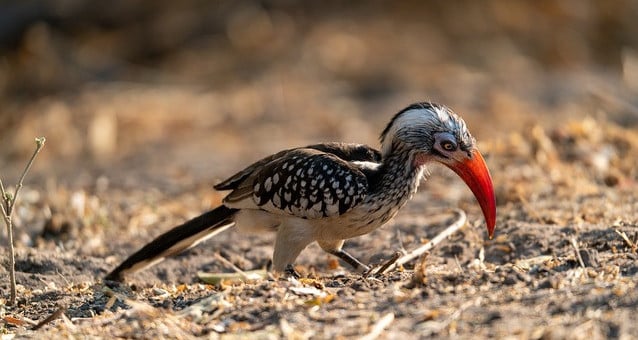
Hornbills are not endemic to the African continent and can be found in various locations across the world.
In total, there are 56 species of hornbills, with 23 of them living in sub-Saharan Africa in a myriad of habitats, so that’s about half of all the species living in Africa.
A few species are quite noticeable and popular with birders while others are rare and difficult to spot. Here is a list of the hornbills in Africa.
- Northern Ground hornbill
- Southern Ground hornbill
- Von der decken’s hornbill
- Monteiro’s hornbill
- Bradfield’s hornbill
- Hemprich’s hornbill.
- Jackson’s hornbill
- Damara hornbill
- Dwarf hornbill
- Red billed hornbill
- Pale billed hornbill
- Eastern yellow billed hornbill.
- Southern yellow billed hornbill
- Western African pied hornbill
- Congo pied hornbill
- Western little hornbill
- Eastern little hornbill
- Eastern long tailed hornbill
- Western long tailed hornbill
- Eastern piping hornbill
- Western piping hornbill
- Grey cheecked hornbill
- Brown cheeked hornbill
- Silvery cheeked hornbill
- Trumpeter hornbill
- Black casqued hornbill
- African grey hornbill
What do Hornbills look like?
They come in a variety of sizes ranging from the largest hornbill species; the Southern ground hornbill to the smallest; the black dwarf hornbill.
The Southern Ground Hornbill has a length of between 90 and 130 cm (2’11” and 4’3”), with an average weight of 3.7 kg (8.3 lb), but can reach up to 6.3 kg (14 lb), while the black dwarf hornbill has a length of 32 cm ( 1’1”) and an average weight of 99 g ( 3.5 oz).
Among hornbills, males are usually bigger than females but not by much, which also varies with species.
Other than the casque, the other distinctive feature of hornbills is their large, heavy, de-curved bills. The casque on top of the bill ranges from a large bulky structure to a small ridge along the top of the bill.
They are covered by keratin ( the same stuff in our hair and nails) and are reinforced by bony struts and are usually hollow inside.
A hornbills casque can be a resonant chamber to improve their sounds, it can be a counterbalance for the heavy bill or give the bill additional strength. Casques can also be a signal of sexual maturity as they may take several years to reach full size in males.
The majority of hornbill species have dull body colours such as brown, white, grey or black with the only vibrant patch of colour being around the face or the bill itself.
Even with their exceedingly large bills, hornbills have binocular vision, and they also have eyelashes that act as sunshades and also protect the eyes.
Where Do Hornbills Stay?
Hornbills can be found in forests, savannahs and tropical forests. In their habitats, they roost in great numbers, following the rules of safety in numbers.
In the forests, hornbills will roost under the forest canopy to protect themselves from birds of prey ( smaller hornbill species are preyed upon by large owls and eagles).
On the trees, they roost on the outer thin branches as a form of protection against climbing predators.
Want to find the best binoculars for a safari? Check out my blog post here!
Where can Hornbills be found?
Hornbills are widespread throughout the tropical regions of sub-Saharan Africa, and Southeast Asia.
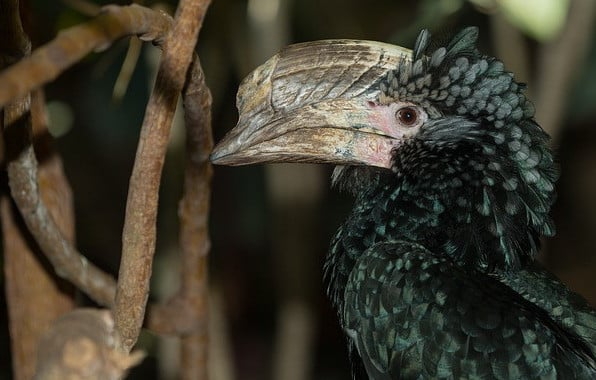
What is the Diet of the Hornbill?
Hornbills are omnivores, feeding on a diet of small animals, insects and fruits.
Those species that live on the open savannahs are more carnivorous than those in the tropical jungles, due to the abundance of fruits in forests.
Forest-dwelling hornbills are extremely important seed dispersal agents and are essential to their ecosystems.
The Breeding of the African hornbill bird
During the breeding season, hornbills usually form monogamous pairs that help in raising the chicks.
The males will usually build trust by bringing food to the female throughout the year, this shows that he is devoted to her and will be there during the critical incubation stage.
The females usually lay up to 6 eggs in either tree holes or natural crevices.
Forest species select tree cavities that are 20 to 50 cm (7.8” to 1’7.6”) from the ground and at least 45 cm (1’5.6”) in diameter. A good hollow may sometimes be used repeatedly by the same or different hornbills.
Once the eggs are laid, the incubation period varies from species to species with some taking 25 days ( the smaller species) to 150 days ( for the larger species).
During the incubation period, females in all hornbill species apart from the two ground hornbill species seal themselves together with their eggs in the cavity.
The entrance is sealed using mud, dirt, droppings and pieces of food leaving only a small slit for the male to feed her through. The female also sheds feathers to better help incubate the eggs, which will regrow after she leaves the nest.
The nesting period usually takes place in 5 stages.
- Mating and selection of the nesting cavity or hole.
- The eggs are then laid, after which the female hornbill seals herself in the nesting cavity until the eggs get laid.
- The third stage is the egg incubation stage.
- After the eggs have hatched, the nesting female leaves the nest, but the entrance is resealed and will be open until the chicks are ready to fly, usually in 8-13 weeks.
During this stage, the eggs hatch in the order they were laid, and just like other birds, the firstborn chick has the highest chance of survival. The chicks are born after struggle due to competition for food from the older siblings.
- The nest seal is broken, and the chicks are ready to leave the nest.
The Cultural Importance of the African Hornbill Bird.
The Southern ground hornbill is subject to several traditional beliefs across some cultures in Africa. It is closely associated with thunderstorms and great rainfalls. In some cultures, if a single feather is found on the river, then they believe a great flood will occur.
In other cultures, these same birds are associated with great misfortune or death. This leads to the birds either being revered and harming them being considered a taboo or it may lead to their indiscriminate persecution.
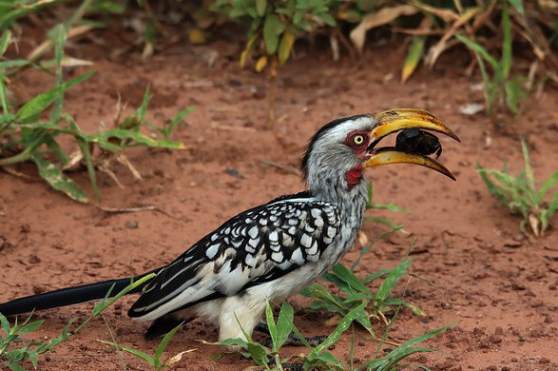
Are you thinking about buying binoculars to have a good look at all the magnificent birds of Africa?
Common Hornbill Species in Africa
Now that we know a little bit more about hornbills, there are some Hornbills in Africa that are more common than others and are a must-see, once you plan a birding expedition to Africa.
1. African Grey Hornbill.
The African grey hornbill is grey or ashy in colour with a long arched bill that can come in different colours such as black and white. In males, the bills are darker with a pale base, while the females have a purple or red tip on the bill.
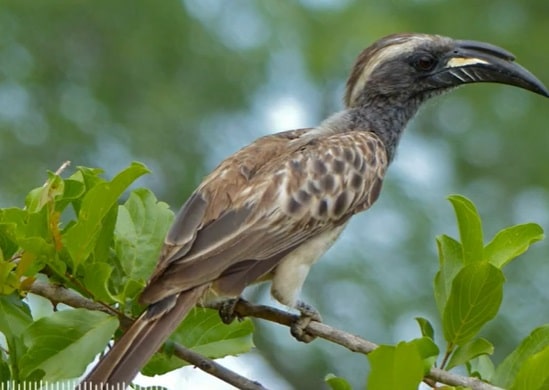
The head is black with a thin white strip, with red eyes and feet that are black to white. The bird prefers dry habitats, these are arid and semi-arid areas with good forest cover to suit their nesting needs.
This species is monogamous, with both parents taking part in raising and feeding the chicks but the females have the task of building the nest.
These birds are rather intelligent among birds and are good fliers reaching a top speed of 72 kmh (45 mph). Just like other Hornbills, they are omnivores feeding on seeds, fruits, insects, rodents and small mammals.
2. Abyssinian Ground Hornbill
Other than the Southern Ground Hornbill, the Abyssinian Ground Hornbill or the Northern ground hornbill is also one of the largest hornbill species in the world.
They are majorly carnivorous and spend a lot of their time, up to 70% of their time on the ground. Their diet consists of reptiles such as lizards, tortoises, snakes ( even poisonous ones), small mammals and insects.
Occasionally they will also feed on carrion as well as nuts, fruits and seeds to supplement their diet.
Even though they are terrestrial, they need trees to roost and nest. They can be found in grasslands savannah and semi-arid rocky areas and are distributed from Senegal through West Africa to Ethiopia.
They are monogamous with the males taking care of both the chicks and the females. The nests are made in tree cavities or rock crevices and synthetic holes with the males having the job of preparing the nests.
3. Southern Ground Hornbill
The biggest hornbill species in the world, the Southern Ground hornbill is the size of a turkey. This bird is easily recognisable from its jet black body feathers, bright red throat and skin patch around the eyes, and yellow eyes.
Unlike other hornbills with magnificent Casques, the Southern Ground hornbill has a rather small protrusion on top of the bill, but can be loud, using its wattle to make loud booming sounds that can be mistaken for a lion’s roar.
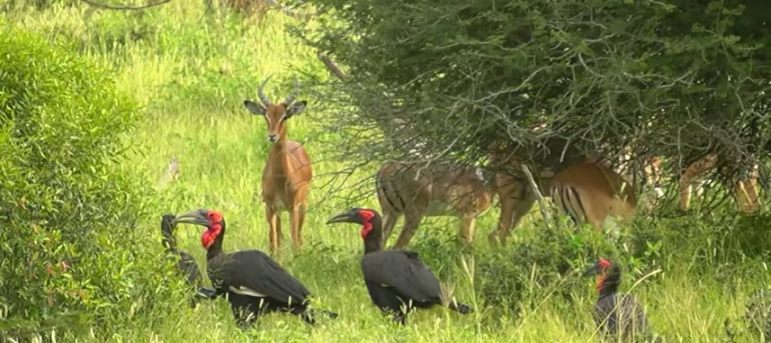
The Southern ground hornbill prefers to live in open grasslands, Savannahs and woodlands with enough trees to roost and nest in.
They are mostly carnivorous feeding on small mammals, insects, lizards, snakes, tortoises, but will supplement their diet with seeds and fruits.
These birds are socially moving and staying in large groups bit with only the dominant male and female breeding. The other members of the group help in raising the chicks and in defending their territory.
4. Von Der Decken’s Hornbill
Von der Decken’s hornbill is well distributed across Eastern Africa through Tanzania, Kenya, Somalia and Ethiopia.
Their diet is mainly made up of insects, but will also include small mammals, snails, tree frogs, nestlings and seeds.
Within their ecosystems, they are extremely important in keeping the insect population in check and have even established a mutually beneficial relationship with the dwarf mongoose, warning the mongoose of any predators while it feeds on the insects flushed by the mongoose.
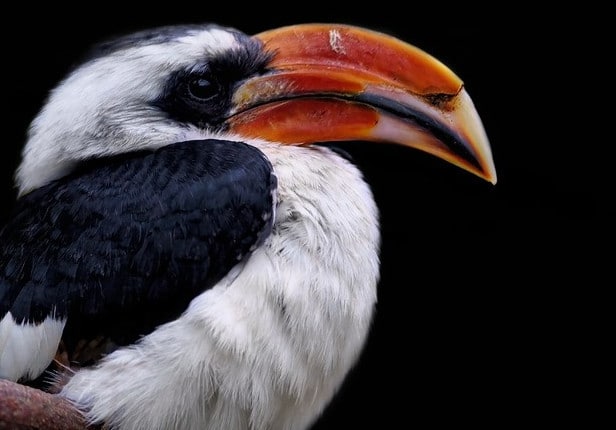
The males have large red bills the females have black bills. They will be found in arid conditions, open bush, savannahs, and scrubland.
Are you thinking about buying binoculars to have a good look at all the magnificent birds of Africa?
FAQS on the Hornbils
A few more FAQs for you on the Hornbills
Why are they called hornbills?
Hornbills have a uniquely long bill that usually has a horn-like appendage on top, giving them the name hornbill.
What is the other name for hornbills?
The scientific name for hornbills is ‘bucerotidae’ which means “cow horn” in Greek.
What makes Hornbills unique?
Other than their bony casques which makes all hornbills unique, they also have a mating ritual that is pretty unique among birds.
The female bird after the mating process will seal herself in a tree hole or crevice with the help of the male leaving an opening big enough for only her beak to come through. This opening is for the male to continue feeding her during the incubation period.
Are hornbills aggressive?
Hornbills can be aggressive towards other hornbills especially when they are defending their territory or nesting site.
Related articles:
My Final Conclusion.
I hope that you enjoyed this article on the African Hornbill bird, but if you have any more questions about this African bird or would just like to chat with me, please feel free to ask them in the comment section below.
You can also join me on my social media channels for more stories about my travels to Africa and plenty of pictures.
I wish you happy birding and traveling!
Kind regards,
Lizzy
I now have a YouTube channel as well!
YouTube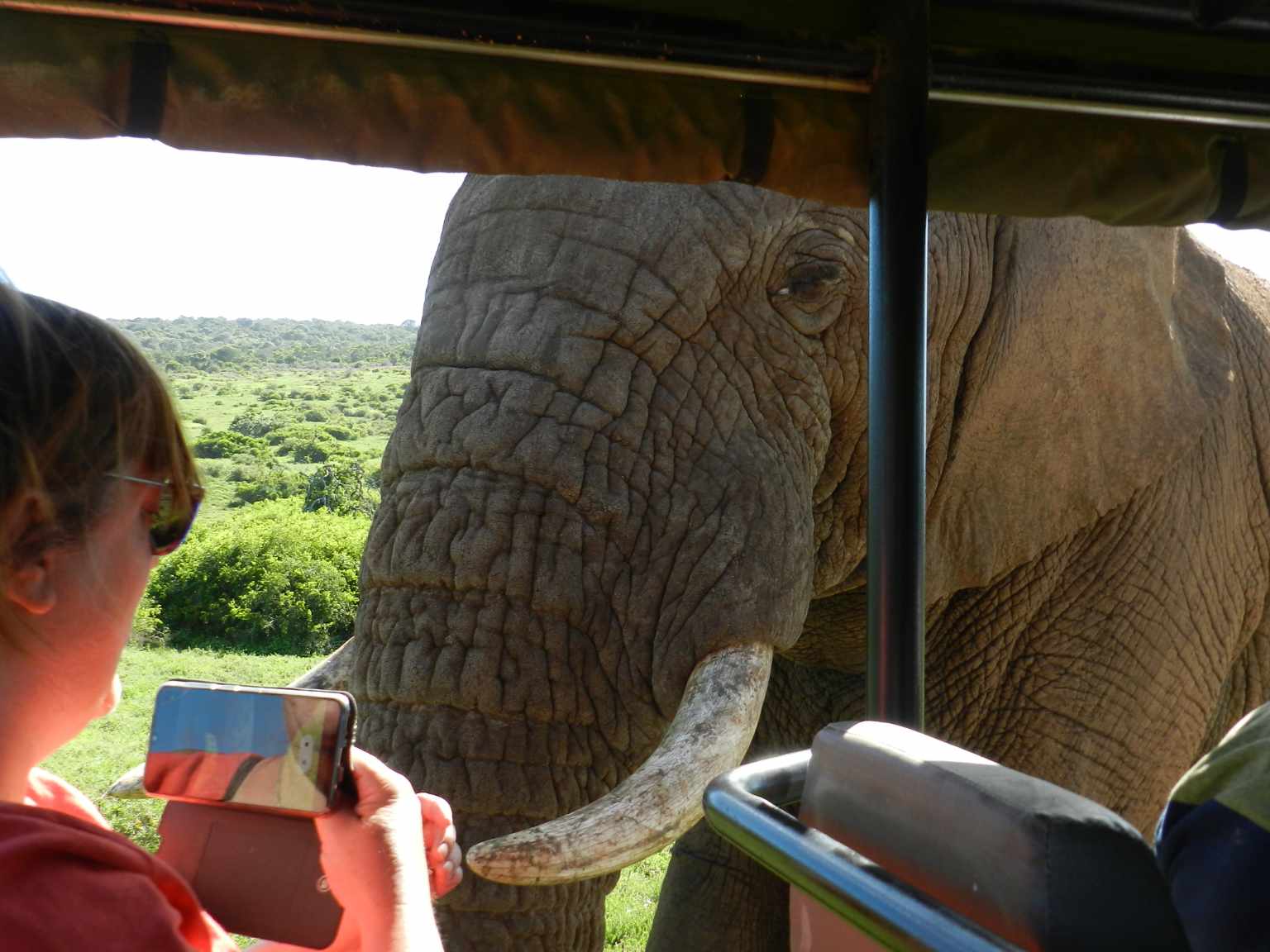
Hello Africa travellers!
Who am I? Well, the least you can say is that I am quite crazy about Africa, its nature, its climate, its culture, and more.
As a young woman in my twenties, I had already traveled to several African countries by traveling along in an overlander on my own and mostly camping ( or glamping ) and just fell in love with the diversity of it all.
So much, so that at the age of 26, I went back to university to study biology, which, unfortunately, I couldn’t finish because of health reasons (yes, I got sick from a tropical disease, oh cynicism). But this did not stop my dream of traveling back to Africa several times, and I still do.
My dream was back then to leave Europe and go study animal behavior, especially the elephants (sure, that’s every girl’s dream haha), but I am also very much intrigued by hyenas and other “ugly African animals“.
So, I “kind of” have a little bit of a scientific approach to my articles, when I write about African birds, for example. And most of all: the passion.
But life goes on, you move from one side of the country to the other, you get sick again and top it off with lower back problems, and before you know it, you are over 50 hahaha!
Now, I still travel to Africa, but take it a bit “easier” than the good old camping days, and stay in comfortable, yet affordable accommodations, together with my husband Wouter.
These are some of the countries I have traveled to: Kenya, Tanzania, Zanzibar, Malawi, Zambia, Zimbabwe, South Africa, Namibia, Botswana, Tunisia, and a little bit of Lesotho LOL .
While clearly not being African territory, but Spanish, I also visited Gran Canaria and Tenerife, and location-wise, I consider them “African”, because of their climate and nature, sue me :-p
The last trip I took was to South Africa in the year 2023, and it sure got the fevers for Africa back! From the Barberton mountains to the Drakensberg and the Southcoast, one month wasn’t enough at all to see the whole country, so we’ll be back! At ease and with a little bit more luxury than in my younger days haha!
I wish you happy travels!
Kind regards
Lizzy

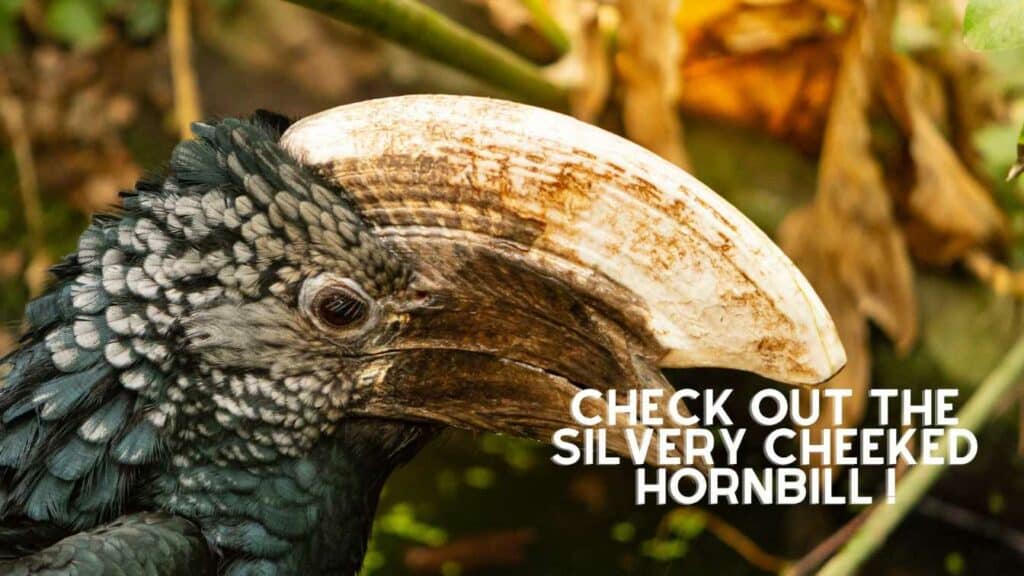
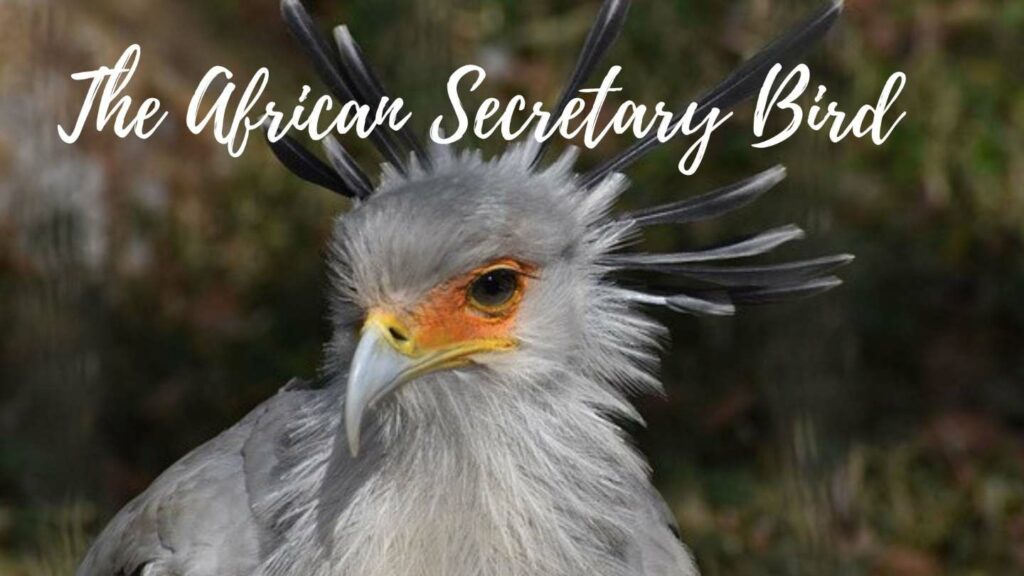
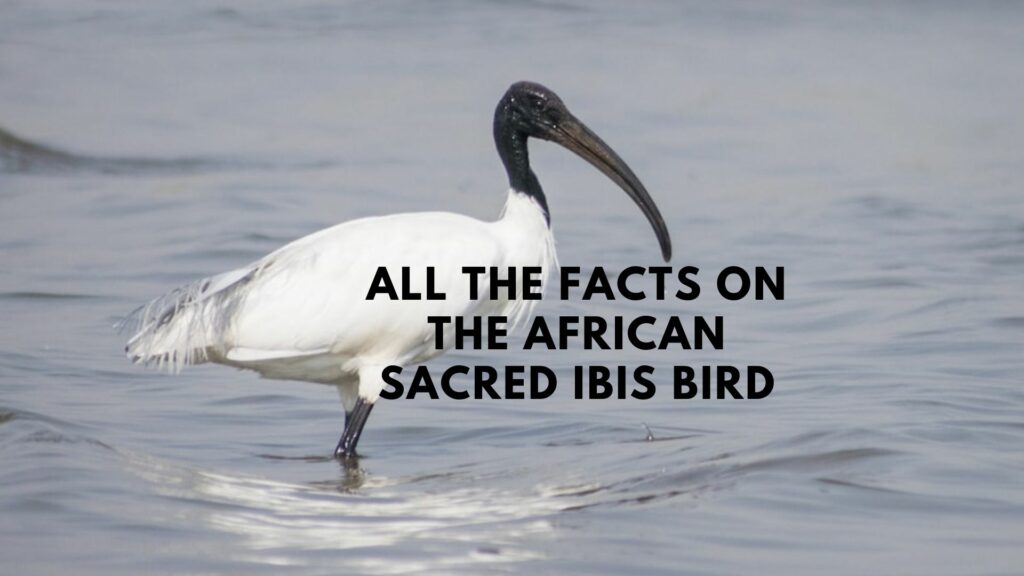

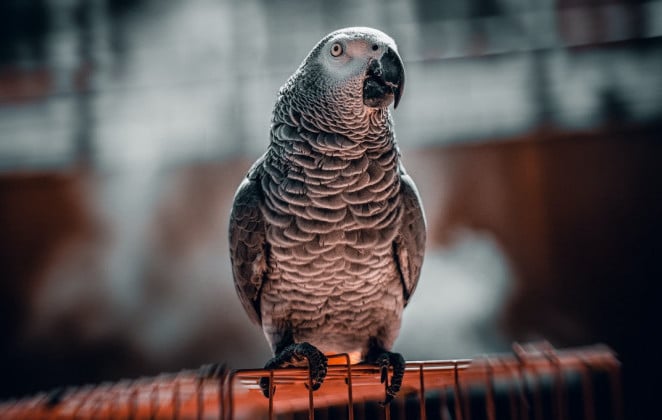
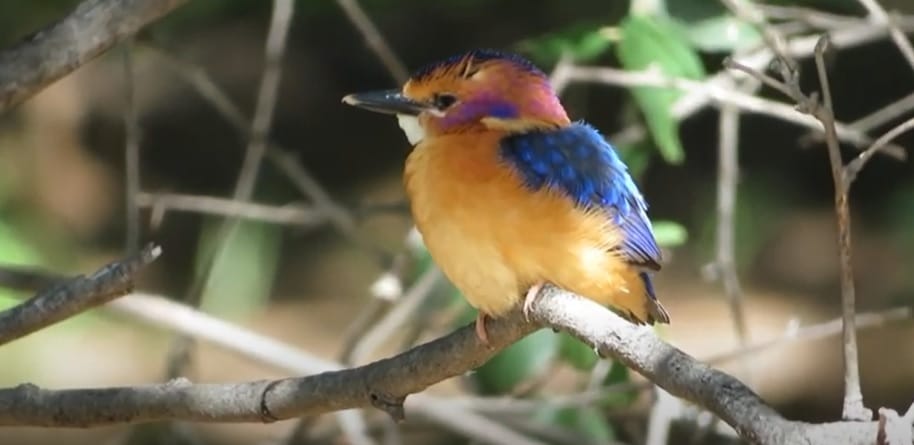
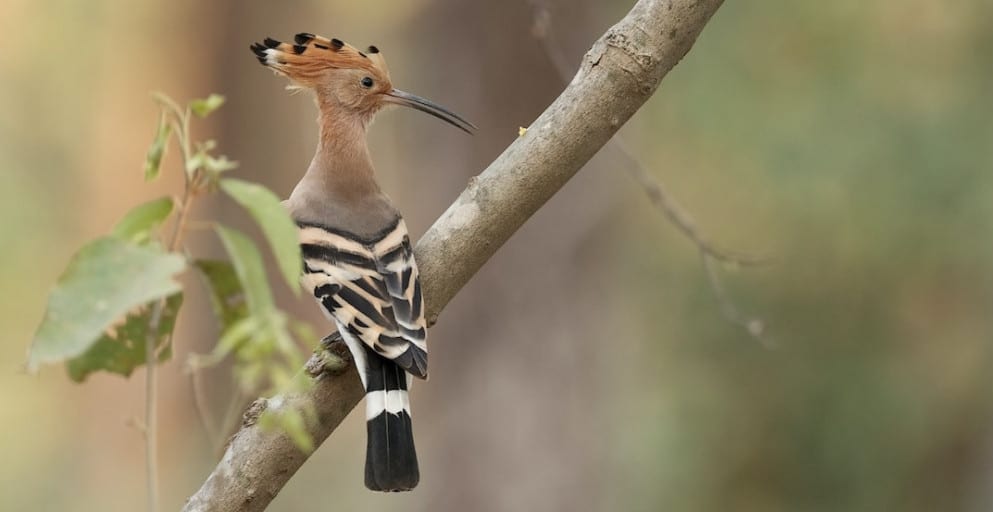
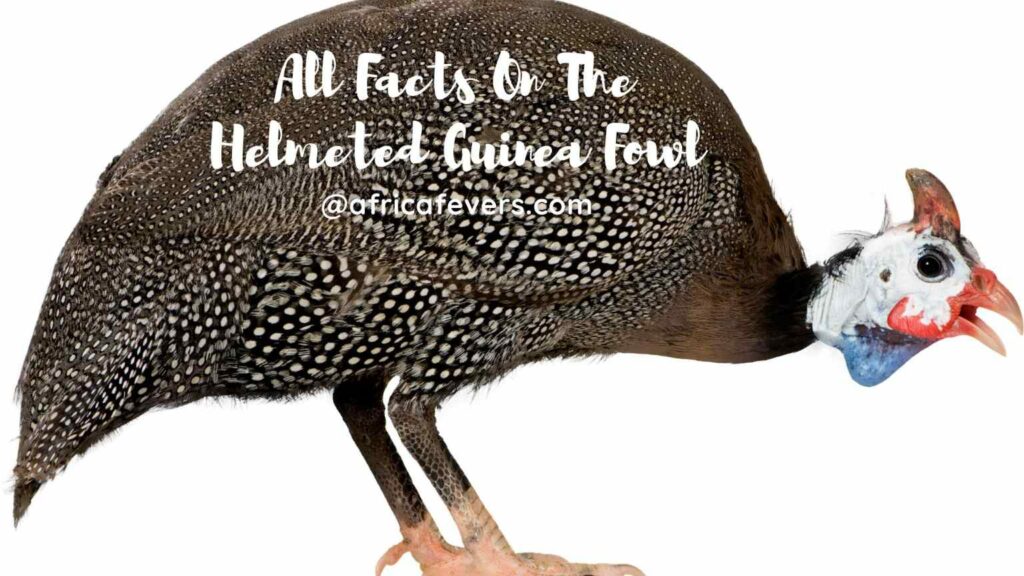

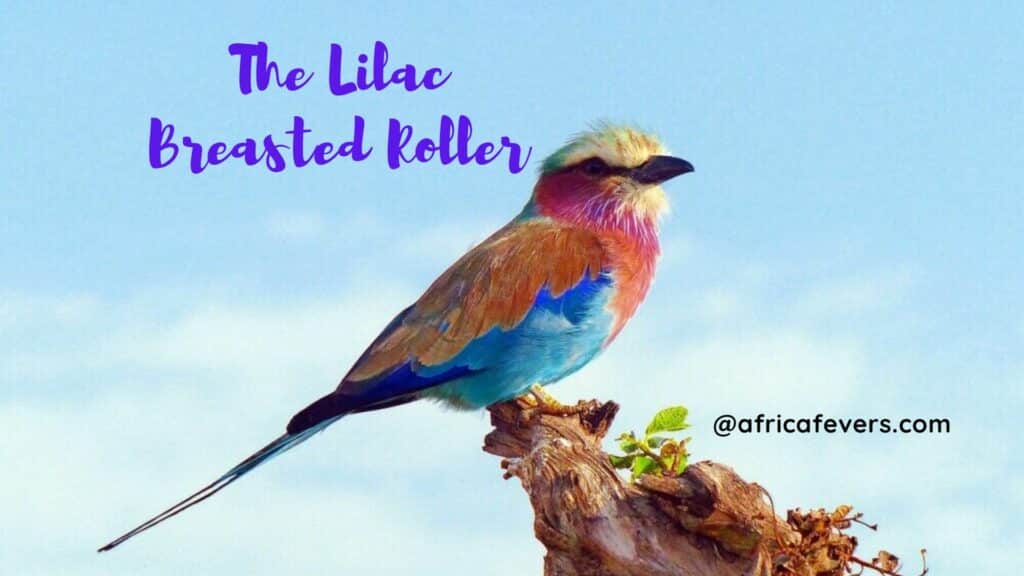
Ah, the African hornbill bird! It’s truly one of the savannah’s noisiest and most vibrant inhabitants. I’ve had the pleasure of encountering these majestic creatures during my adventures in Africa, and their distinctive calls never fail to captivate me. They add a unique soundtrack to the wilderness, and their vibrant plumage is a sight to behold. If you ever find yourself exploring the African savannah, keep an ear out for the lively tunes of the African hornbill bird – it’s an experience you won’t forget!
Hi Steve,
Amazing but noisy, that sums it up all right, haha!
Thank you for your comment and I wish you happy birding!
Lizzy
The article provides fascinating insights into the diet and breeding habits of hornbills, shedding light on their important role within their ecosystems. It’s intriguing to learn that hornbills are omnivores, with their diet consisting of a combination of small animals, insects, and fruits.
The distinction between the dietary preferences of savannah-dwelling and forest-dwelling hornbills is particularly noteworthy. The availability of fruits in forests seems to influence the diet of forest species, making them less carnivorous compared to their savannah counterparts. This adaptation showcases the remarkable ability of hornbills to adapt to their specific habitats and utilize available food sources.
Furthermore, the article highlights the crucial role of forest-dwelling hornbills as seed dispersal agents. Their feeding habits contribute significantly to the dispersal of seeds, playing a vital part in the maintenance and regeneration of forest ecosystems.
What a fantastic article packed full of fantastic information!!
Hi Freddie!
Thank you for your compliments and I wish you happy birding!
Kind regards,
Lizzy